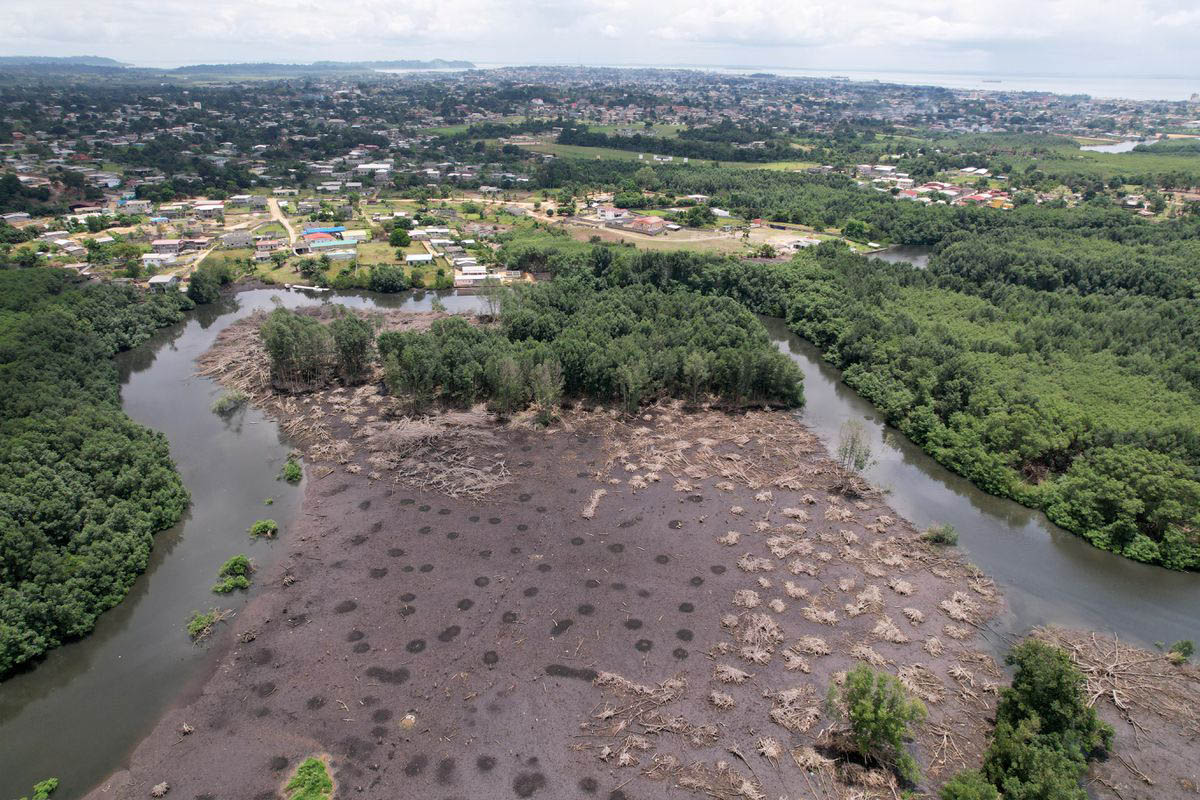PONGARA NATIONAL PARK, Gabon (Reuters) – The towering trees in Gabon’s impenetrable mangrove swamps have helped to make the Central African country one of the world’s few net absorbers of carbon as the plants sequester the greenhouse gas four times faster than forests on land.
While the world struggles to curb climate change and U.N. talks on the issue begin at the end of the month, countries such as Gabon are trying to work out exactly how much carbon is locked in their mangroves.
“We do not really have a lot of information on the mangrove forests compared to the terra firma forests,” said Vincent Medjibe, who collects carbon data for Gabon’s National Parks Agency. “We’re working on it.”
Across the estuary from the mangrove-rich Pongara National Park, the growing capital Libreville exemplifies the threat mangroves face. In one outer neighbourhood, dry tussocks and muddy holes are what remain of a former swamp that has been illegally cleared for construction.
As well as storing carbon, the swamps are rich in wildlife and serve as natural flood defences.
A resident who gave her name only as Christella said she was worried her future neighbours didn’t realise the danger. “They’re in a basin of sorts and when the heavy rains come, the water can rise,” she said.
The positive news is that awareness is growing.
In the last 20 years, mangroves have recovered from being one of the world’s fastest-shrinking habitats to one of the best-protected with over 40% in a legally protected area, a July report by a coalition called the Global Mangrove Alliance found.
Gabon only began to realise the full extent of its mangroves in 2018 when a study in the journal Nature Geoscience used satellite imagery to discover some of the estuary’s trees were more than 65 metres high, taller than the Sydney Opera House, making them the world’s tallest mangroves.
NASA earth scientist Lola Fatoyinbo, who co-authored the study, said knowledge was improving rapidly.
“Science has gotten better, our understanding of their role as really important carbon sinks has gotten better and so awareness has become greater,” she told Reuters.
Mangroves are found in over 100 countries. Those that lack monitoring capacity can use an online map and data platform called Global Mangrove Watch. It sends out alerts in near real-time when it picks up signs of disturbance.
In Gabon, public awareness drives are designed to reduce the pressure on Libreville’s mangroves and the country’s space observatory is helping to track the mangroves that fringe nearly half of the 1,485 km coast, head of environmental protection Stanislas Stephen Mouba told Reuters.
“There’s a very huge logistical aspect if you want to cover all the mangroves of Gabon, but with this kind of tool we can use it as an early warning system … they can say ‘oh, we have to send people here,’” he said.

